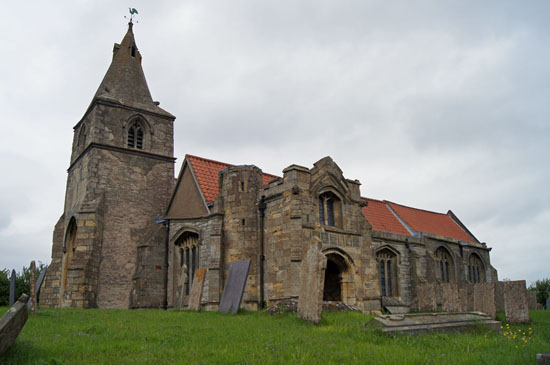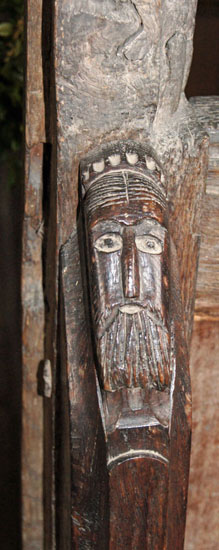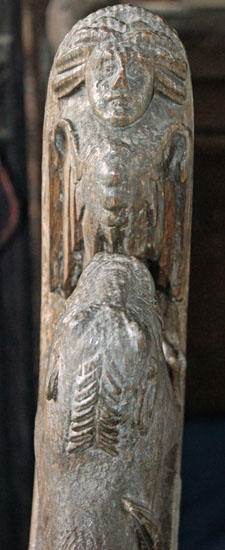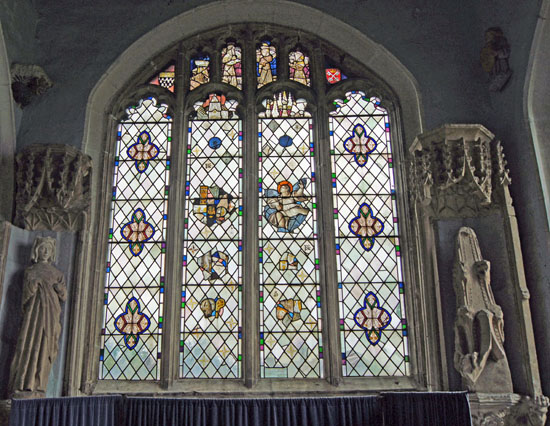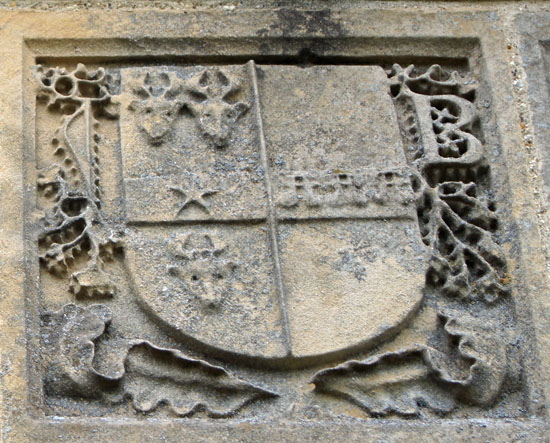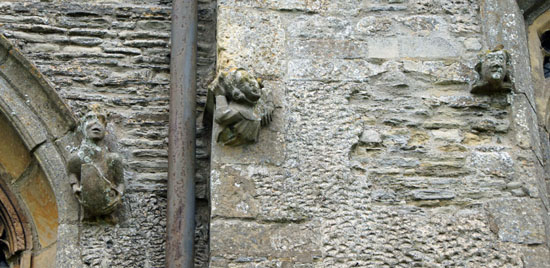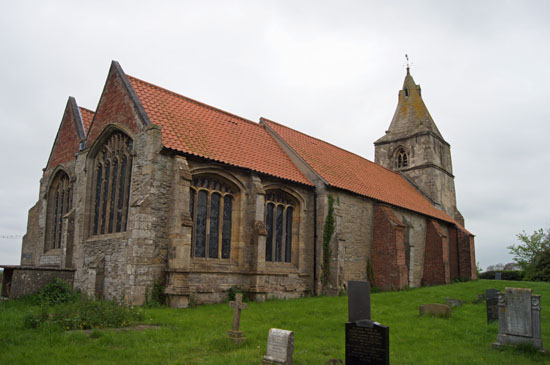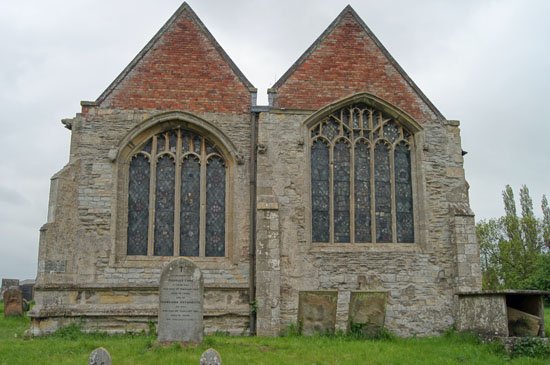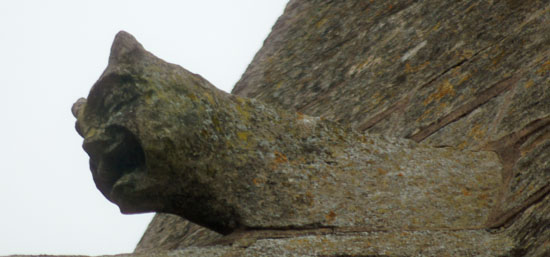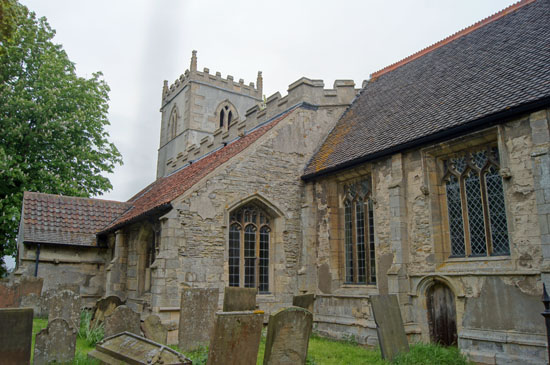|
|
||||||||||||||||||||||||||||||||||||||||||||||||||||||||||
|
Please sign my Guestbook and leave feedback |
||||||||||||||||||||||||||||||||||||||||||||||||||||||||||
|
Recent Additions |
||||||||||||||||||||||||||||||||||||||||||||||||||||||||||
|
|
||||||||||||||||||||||
|
traditional crosses symbolising the wounds of Christ.The fabric of the church is unremarkable - one might even say higgledy-piggledy! . There is some Norman masonry within the walls but for all practical purposes it is the rather rustic-looking tower that is the oldest part. The Church Guide says it is Decorated period, and I would suggest that it was very early in that period. John Barton was responsible for the considerable rebuilding work commenced, according to the Church Guide, in about 1485 - the year when Henry VII was putting an end to Richard III and the Plantagenet dynasty at the Battle of Market Bosworth about 50 miles away. This work added the Lady Chapel and the North aisle. The aisle, in fact, is at least as wide as the nave and chancel and also as long, which is a little confusing visually! The parvise room above the porch is known as Nan Scott’s Chamber and is viewable by visitors. Legend has it that during the Black Death of 1666 one Nan Scott locked herself away in this room for several weeks, watching her fellow parishioners buried one-by-one in the churchyard below. When she was driven from her refuge by lack of food and water she found only one other survivor. Horrified at what she found, she returned to the chamber and stayed there for the rest of her life. Well, it is easy to be sceptical but I, for one, don’t find the story totally implausible. All credit to the churchwardens here for keeping it as it might have been in Nan Scott’s day, complete with truckle bed and old bible. Both the east windows contain mediaeval glass. As in many churches, some of it is fragmentary and has been re-assembled rather haphazardly. The chancel window, however, has three readily-distinguishable figures of saints and also (perhaps inevitably) coats of arms associated with the Barton family! Some of the glass, including four quatrefoils, were donated from the ruined church at Annesley. The Lady Chapel window also had prophets in its top lights and parts of these remain. This is not a beautiful church: it looks a little “thrown together”, to be honest. It is special because it really does feel as if you are standing in a c16 building. This is no “single treasure” church: it is just packed with interest. And it feels loved. You will know what I mean when you visit it! As a last word I will quote Simon Jenkins from his “England’s 1000 Best Churches”: “Running my fingers over the benches at Holme is the nearest I have come to feeling time”. I know exactly what he was talking about. |
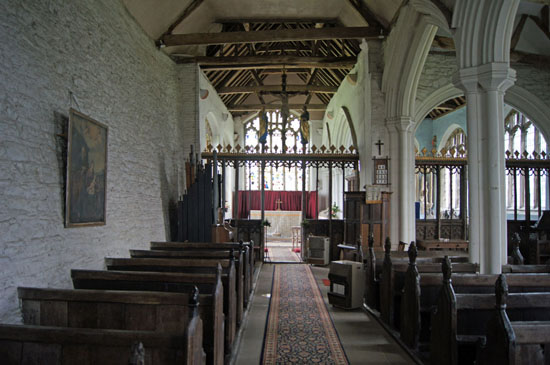 |
|||
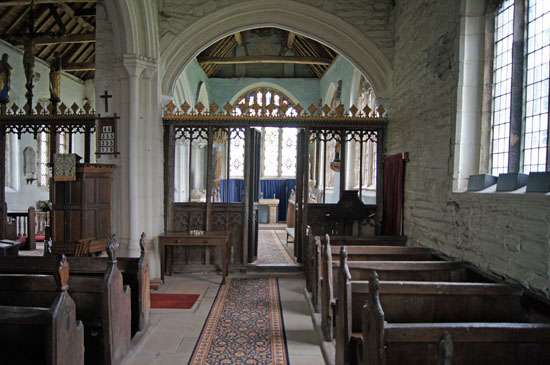 |
|||
|
At Holme, you are hard-pressed at first to decide which side is the nave and chancel (left) and which is the aisle and chapel (right). Indeed the aisle seems wider than the nave. Note the original, if restored, screen which has had its rood (cross) and supporting figures reinstated. |
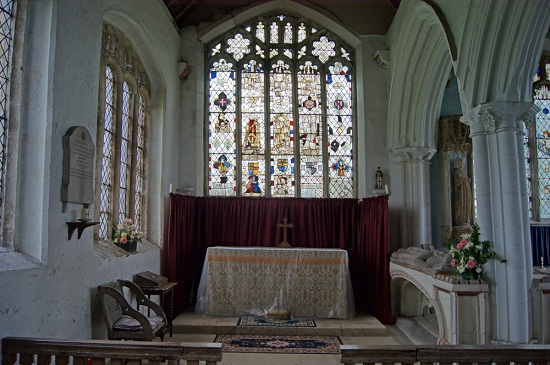 |
||||||||||||||||||||||||||||
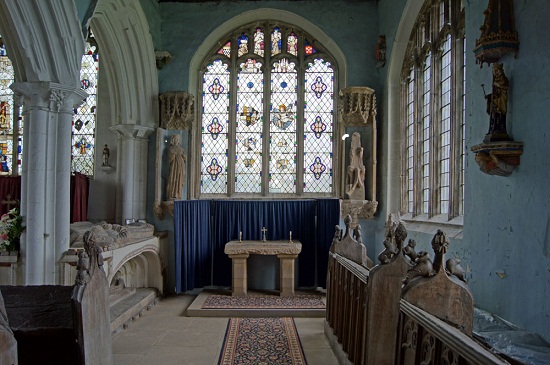 |
||||||||||||||||||||||||||||
|
Left: The chancel with the John Barton monument intruding to the south. Right: The lady chapel with the John Bartom monument to the north. |
||||||||||||||||||||||||||||
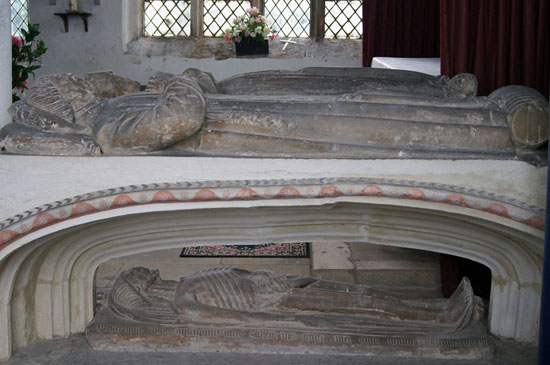 |
||||||||||||||||||||||||||||
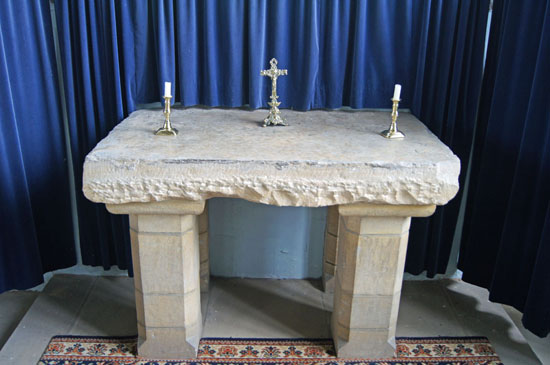 |
||||||||||||||||||||||||||||
|
Left: The monument to John Barton and his wife, Isabella. Note the skeletal (and anatomically incredible) figure below. There was a fatalistic fashion at the time for acknowledging the mortality of the flesh as a warning to others - “As I am so shall ye be”. Right: The original mediaeval stone altar now reinstated into the south chapel. |
||||||||||||||||||||||||||||
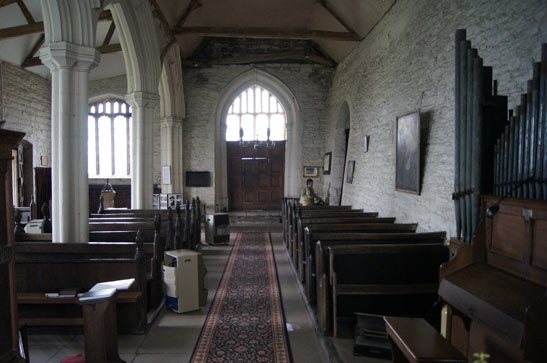 |
||||||||||||||||||||||||||||
 |
||||||||||||||||||||||||||||
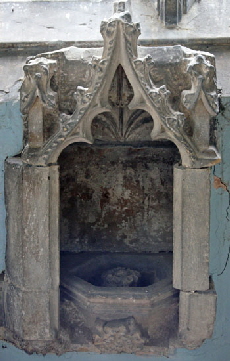 |
||||||||||||||||||||||||||||
|
Left: Looking towards the west door along the nave. Note the rather extreme tilt on the north wall. Centre: This really is a splendid piscina! Nottinghamshire has a great body of superb chancel “furniture” (see, in particular, Hawton) and this piscina is up there with the best. Look at the elaborate “vaulting” effect inside and the elaborate hexagonal shape of the drain. Right: The salamander poppy head figure (see below) shows a lizard-like foot complete with a little spur. |
||||||||||||||||||||||||||||
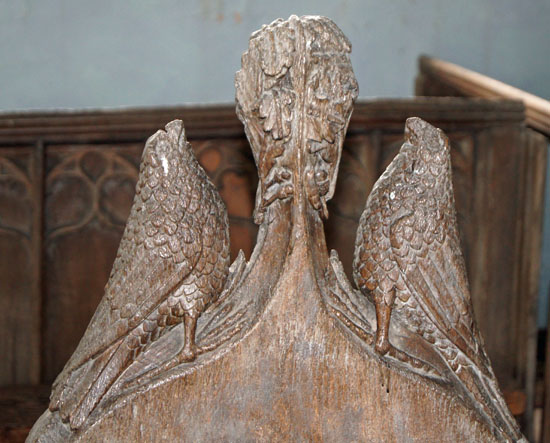 |
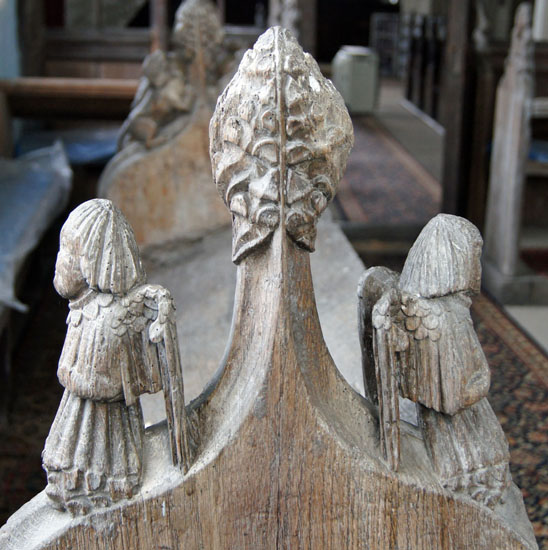 |
 |
||||||||||||||||||||||||||
|
Left: The Church Guide suggests these are eagles. If they are then they are very badly drawn! Centre: A pair of angels. Right: Two lions - or perhaps fantastic creatures. |
||||||||||||||||||||||||||||
|
The Mediaeval Poppy Heads |
||||||||||||||||||||||||||||
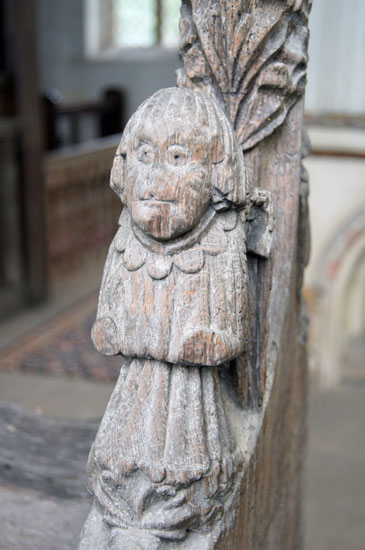 |
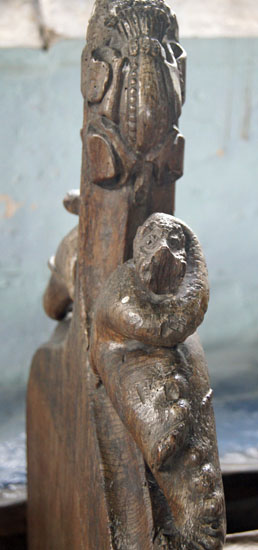 |
|||||||||||||||||||||||||||
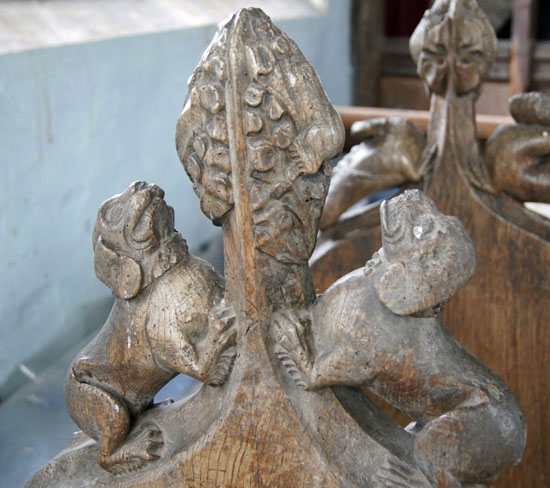 |
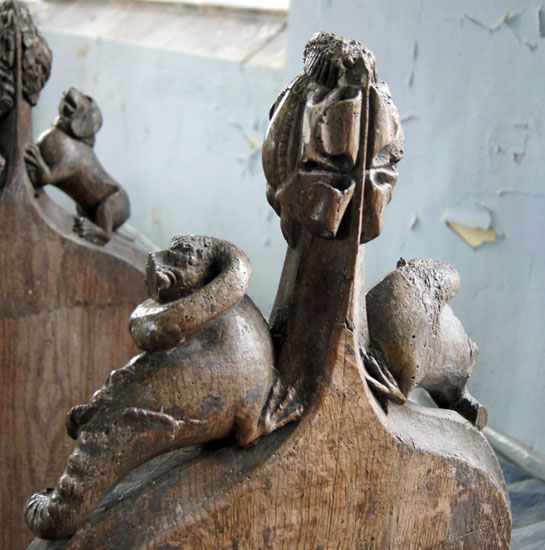 |
|||||||||||||||||||||||||||
|
Left: Two dogs - note the feet that are rather similar to those of the lions! Note also the creature amidst the foliage on the right-hand side and upon which the dog obviously has wicked designs! Second Left: : A rather peculiar figure: the Church Guide suggests a “salamander”. This is plausible - if unprovable - because the salamander was believed to able to survive fire (!) and was therefore seen as a symbol of everlasting life. Second Right: One of the angels, front view. He is rather delightful: more like a tonsured priest with wings! Far Right: Front view of the “salamander” |
||||||||||||||||||||||||||||
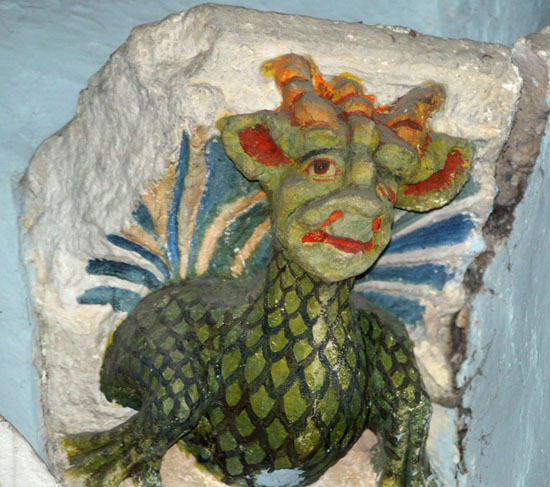 |
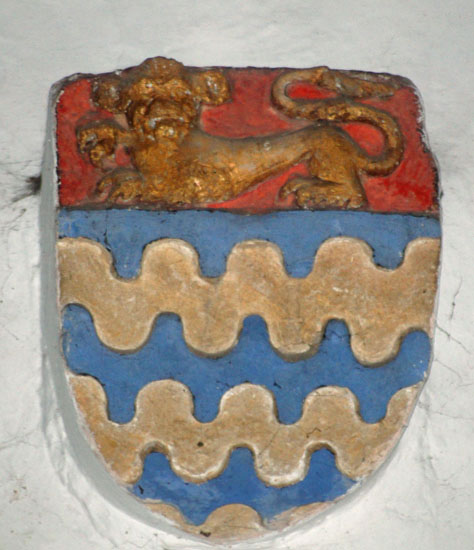 |
 |
||||||||||||||||||||||||||
|
Three of the lovely painted corbels. This is not the original paint (obviously!) but the restorers have given us a tantalising insight into how colourful our churches would have been when every surface was thus painted. The dragon (left) speaks for itself - but what a corker he is: like something from out of a child’s picture book! Those central and right are less fun but historically fascinating. In the centre is the arms of the merchants of the Calais Woll Staple. On the right the rather cherubic figure holds arms bedecked with John Barton’s trademark. Wool was the wealth of England. In other parts of England, especially Gloucestershire and Suffolk, the richly-endowed “wool churches” are huge in proportions and grandeur. Churches such as Lavenham and Northleach put Holme in the shade. Yet Holme is invaluable (and in my view more interesting) for showing us the difference that a single wealthy wool merchant could make to a rural backwater. It is John Barton’s wool church and reflects his idiosyncrasies rather than the fashionable “good taste” of those others where one merchant would seek to outdo another. |
|
|
||||||||||||||||||||||||||||||||
|
|
||||||||||||||||||||
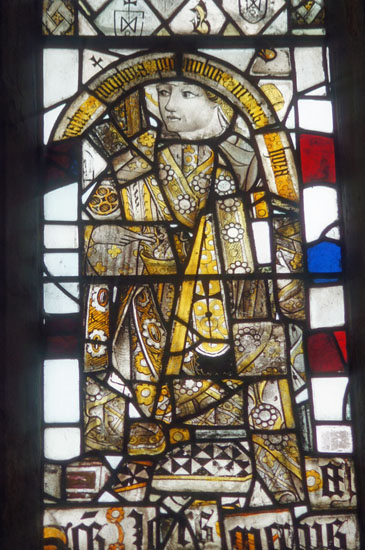 |
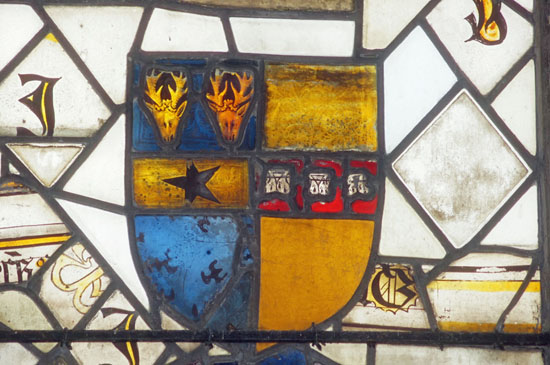 |
||||||||
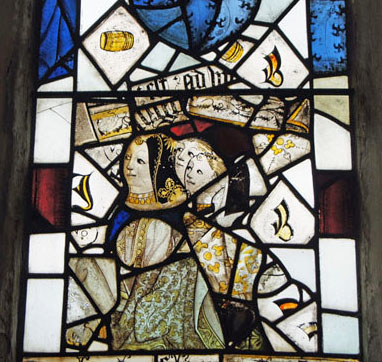 |
|||||||||
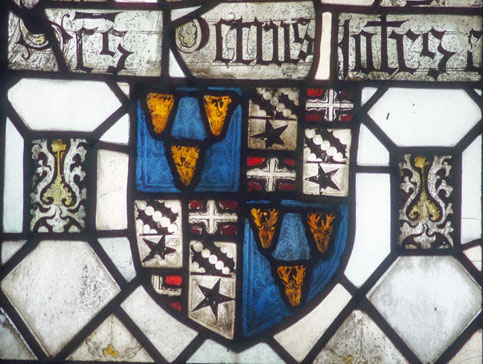 |
|||||||||
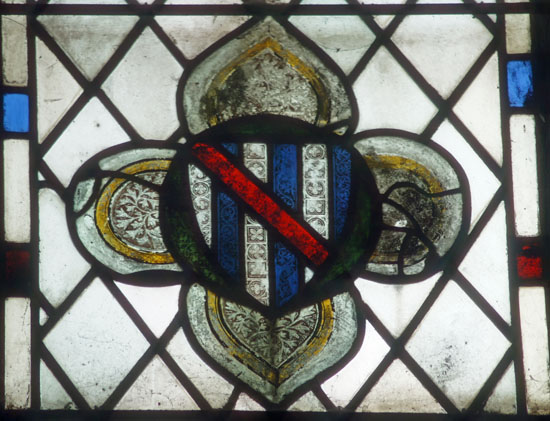 |
|||||||||
|
Detail from the chancel window. As with so many mediaeval glass windows, restoration has meant that the recovered fragments have been re-assembled as a kind of patchwork. This, however, is a very fine “collection” and serves, in my view, to show how mediaeval glass had an artistic finesse and good taste that compares very favourably to the trashy, gaudy factory-produced Victorian glass that disfigures many English parish churches. On the left is the central figure of a bishop. Top right is a delightful cluster of three heads to be seen at the bottom of the window itself. What were they, I wonder? The panels centre top and bottom are coats of arms which show similarities to those carved above the church porch by one of John Barton’s descendants (see below). The quatrefoil design (bottom right) is one of the c14 panels donated to the church when Annesley Church was abandoned. |
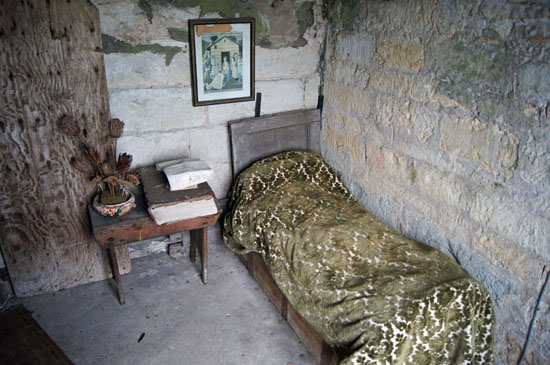 |
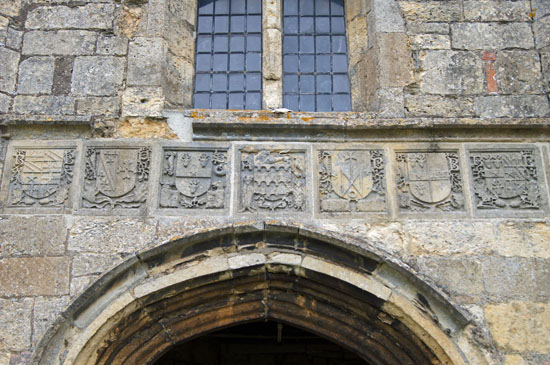 |
|
Left: The interior of Nan Scott’s Chamber above the porch. It is for you to decide whether you believe the legend. Certainly it is not so implausible but even if you are a sceptic the room does make you think about the horrors that the Plague brought to the world. I found it a very spiritual place to be. Right: Above the porch are these seven coats of arms intended to show off the “good connections” the Barton family managed to make through their wealth. The stag emblem of Nottinghamshire is much in evidence. |
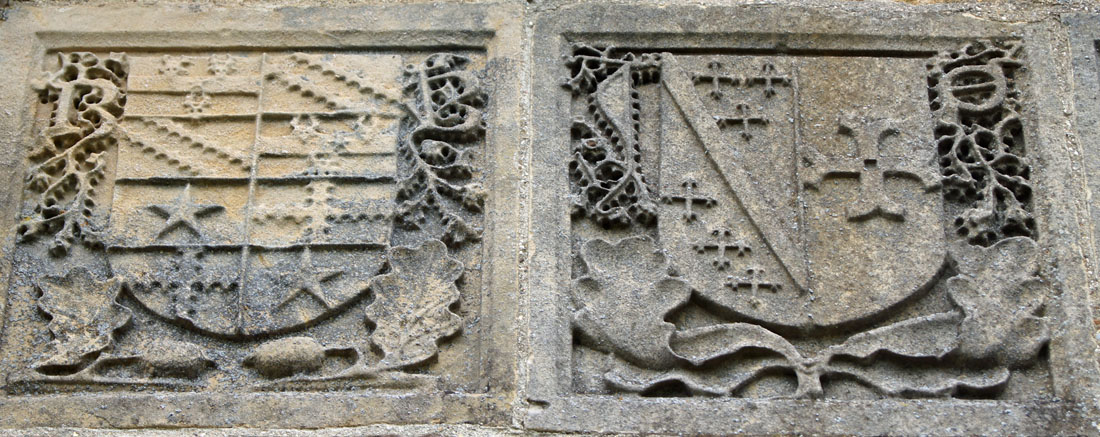 |
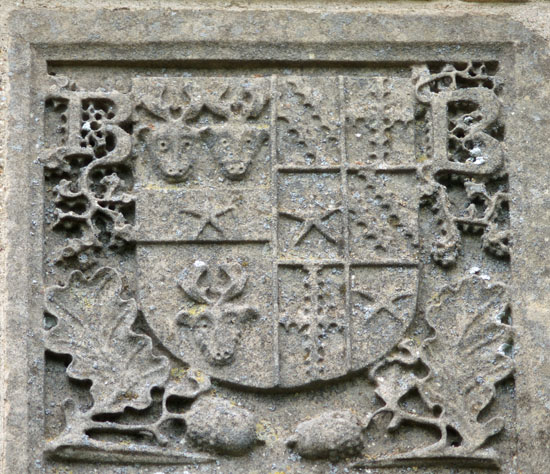 |
|||||
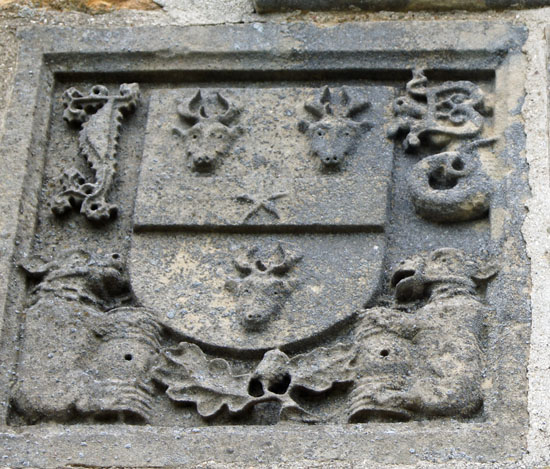 |
|||||
|
Barton Family Arms |
|||||
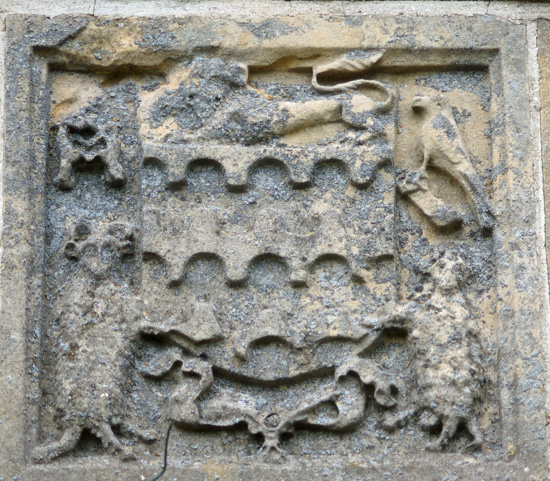 |
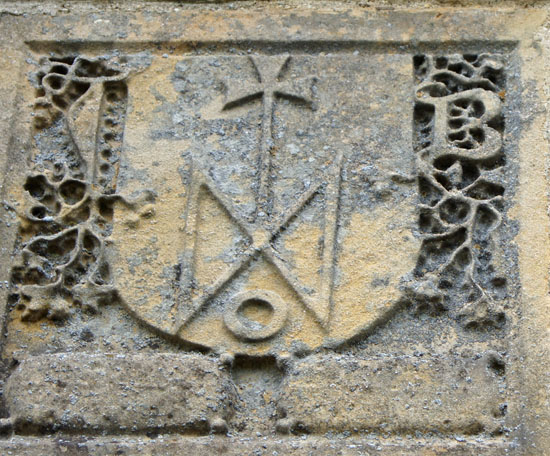 |
||
|
|
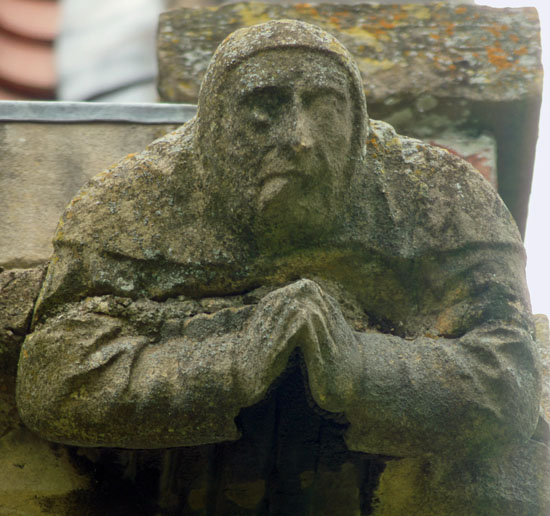 |
|||
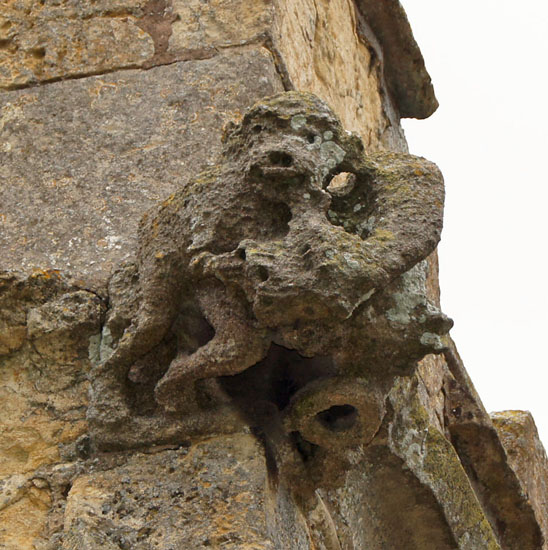 |
|||
|
The exterior of Holme Church also has some quirky carvings, scattered rather haphazardly! Left: On one corner of the porch are two monsters fighting with each other. Right: At the west end of the south side is this large and rather unusual carving of a cowled monk in prayer. |
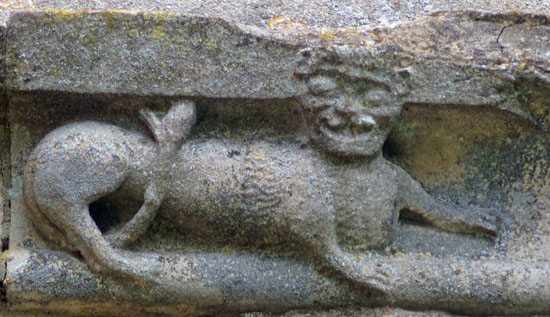 |
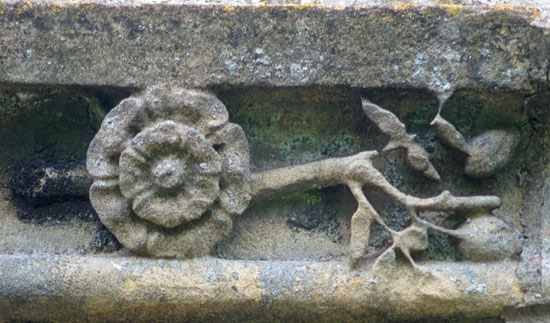 |
|
Two more fairly random carvings on the south side of the church. Left: An extremely peculiar-looking lion. I’ve seen a few curious carvings of lions but I think this one might take the prize - unless of course the head is supposed to be some sort of satirical representation of a man. Note the tail curling up between the legs! Right: A Tudor rose complete with stem and thorns. We might suspect some sort of declaration of loyalty is implied here. |
|
|
||||||||||||
|
|
||||||||||||||||||||
|
|
||||||||||||||||||||||||||||||||
|
Anyway, it’s a good story. Believe it or not, these two churches were on opposite banks of the River Trent until a cataclysmic storm re-routed the river in 1575 so that both villages and churches were now on the same bank! Stop and think about that for a second. Some people would suddenly have found themselves cut off from places previously easily accessible and would be neighbours with villages hitherto hard to reach! Things didn’t get better for Langfordians. In 1593 someone (presumably the local grandee) decided that the village should be “depeopled” to make way for sheep! The village was relocated half a mile away. In doing so, of course, the poor old church was left separated from its congregation. Thus there were 161 villagers in 1086 and only 55 in 1990. There has been a church here since at least 1086. We know this from the Domesday survey. Today’s church was started between 1190 and 1254 in Early English style. Its survival is a small miracle. A “visitation” in 1519 reported that there were no furnishings, no lead on the roof and an empty chancel. By 1684 the people of Langford were petitioning Charles II for help to restore the church that had almost been destroyed in the Civil War (nearby Newark was a Royalist stronghold that saw years of conflict). It had to be restored again in 1841. Just to put the tin lid on it in 1954 some genius suggested moving it stone by stone to the Ladybrook Housing Estate in Mansfield, a mere twenty five miles away at an estimated cost of óG17,000! You will be amazed to know it was discovered it would be cheaper to build a new church. If they were handing out prizes for surviving against all odds I reckon Langford Church (aka “Holme’s Second Church”) would surely take the palm! |
